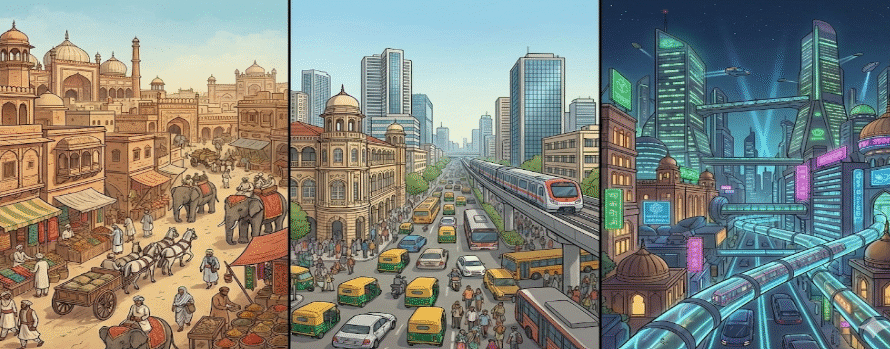Summary: Choosing the right distribution channel is a pivotal decision for any business. It determines how your products are handled, the speed in which they are delivered, and how successful you are at getting your goods into the hands of consumers. Read more to find out what impacts a distribution channel strategy..!
“Most businesses actually get zero distribution channels to work. Poor distribution — not product — is the number one cause of failure.”
— Peter Thiel, PayPal, Co-founder and Investor
Many young entrepreneurs face this dilemma- Despite having the “best product/service”, the customers aren’t turning in. Is it because the product didn’t work? OR because the right customers were never outreached?
Such internal monologue leads to them questioning the credibility of their idea.
And the solution ? Finding the right distribution channels.
What is distribution?
Distribution (or place) refers to an organization, or set of organizations, that is involved in the process of making a product or service available for use or consumption by a consumer or business user. It is the movement and storage of finished goods, from the end of production to the customer.
Distribution is necessary for getting the company’s product into the hands of the consumer. It is about more than finding a channel for the customer. It is important to find a distribution channel that makes it convenient for the buyer to purchase and consume the product. Convenience is a customer-centric view of distribution and marketing.
Why are distribution channels critical for sales growth?
According to CB Insights, 42 percent of startups failed because there was no market need for that product or service. They either didn’t create something that people wanted or they were targeting the wrong users.
The best product doesn’t always win. What wins? It’s a product that satisfies the right market. Without a well thought out distribution strategy, the company may not be able to place the product in front of the right users.
For eg- Amazon monopolizes the market through its same day delivery offering- and it does so via its well-structured distribution strategy. Amazon’s goal is to collaborate with suppliers to increase efficiencies and improve inventory turnover.
So what makes a good distribution strategy..?
“It’s not about tactics and tricks. It’s about an approach and process that will help you figure out the best way to align your product with the ideal users.”
I- Types of the distribution channel
Product distribution relies on combining three different channels (which can be independent or joined):
- Sales channel : these motivates buyers , shares information between company and consumers, negotiates fair bargains for the consumers, and finances the transactions.
- Delivery channels: these are meant only for the physical part of the distribution
- Service channels: these channels are used for after-sales services
For each channel, a company can choose either a direct (in-house) channel or a third-party indirect (outside) channel, or a combination of both.
II- Factors that influence the distribution channels
Selecting a distribution channel can directly impact a product’s success. There are five key factors to consider:
- Size of the market—includes the variety of customer profiles, demographics of customers, types of target audience that are being catered to
- Cost of the distribution channel—absolute value cost, cost per customer, profitability of different channel options.
- Type of product being sold—standard (which have well-defined characteristics, can be sold in large quantities, ideal for external distributors) vs. non-standardized (involves customization, requires personal contact with users)
- Degree of control over distribution channel—open sharing with distribution channels vs. closed relationship, possibility of competition from distributor
- Flexibility of distribution channel—length of contract, time required to develop relationship with the suppliers, retailers
III- How to choose a channel of distribution
Once you have a sense of the type of distribution channel that will work best for your business and customers, you need to select a specific option. Depending on your business and where your customers are located, you may need more than one
Consider the competitors: identify what methods are the competitors using to reach the customers, and why so? The idea is to understand whether their method provides a qualitative or quantitative competitive advantage, or is it simply how the industry operates, and how can one leverage that advantage.
For eg- Bacardi Weekender Music Festivals were started, to create a perfect setting to bring in the customers to the product, that essentially became their moat.
Examine costs and benefits: After deciding on a method of distribution, creating the support systems that go with it is time-consuming and expensive. Carefully weigh the costs and benefits associated with each option before committing resources to it.
Relate solution vs. marketing complexity: When selecting a distribution channel, a company wants to ensure that they can develop and sustain relationships with customers, where in lies these two complexities. If the product is relatively easy to use (solution complexity- how difficult is the product to install, deploy or use), then it should be relatively easy to buy (marketing complexity- how difficult is the product to source, buy or support). Thus, when selecting a distribution channel, the complexity of product solution and marketing should be proportional.
Having a plan for growth: pursuing one distribution channel should not preclude the company from adding more channels with access to more capital , or due to expansion of business or product offerings. Keep up with the market and competitors, so that one can continue to make informed decisions about distribution as the market grows.
Conclusion: The right distribution strategy connects the company’s product solution to the people who have the problem, in a frictionless way. A good distribution strategy helps a company in finding the the right path to the people who will love the product.
By focusing on distribution, you’re starting with the end in mind. You’re setting yourself up for success…!


